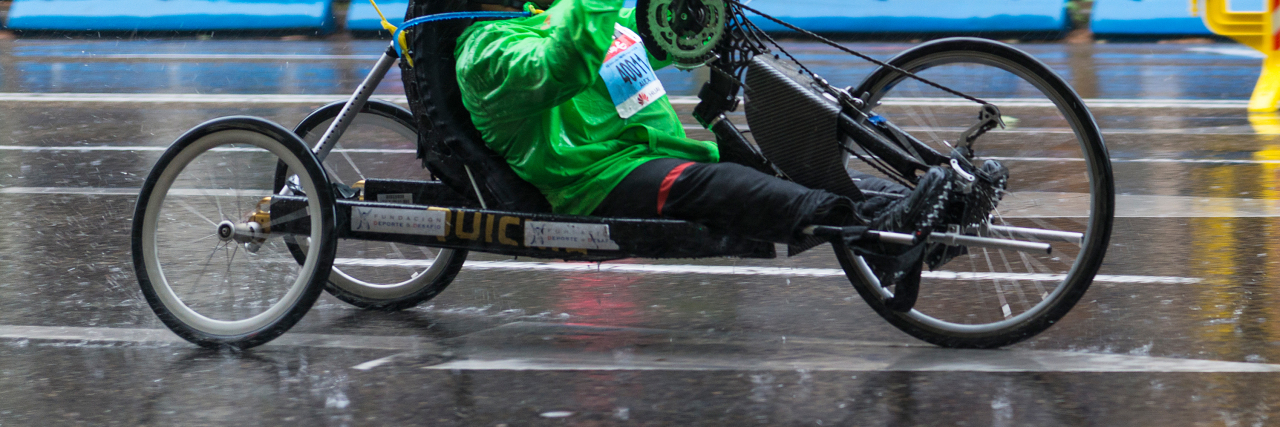I was 5 years old with multiple disabilities, visible and invisible, when the Americans With Disabilities Act (ADA) was passed on July 26, 1990. I remember struggling to navigate school and my community as a child and into my early 20s before learning about ADA, accessibility and accommodations. Now as a 35-year-old with multiple disabilities, the intersection of COVID-19 and the 30th anniversary of the ADA has given me an opportunity to reflect and engage in conversations about how accessibility has changed over the past 30, and how this accessibility continues to impact my self-care.
Research has shown that self-care is critical and necessary to our well-being, individually and collectively. The definition of what self-care is and its purpose may vary depending on the individual and community. Through a combination of life experiences and self-reflection over the years, my personal definition of self-care has evolved into “the intentional practice of holistically meeting myself where I am on a regular basis with compassion, love and care.” Accessibility is essential and interacts fluidly with my self-care intentional practice — a practice that has grown over the decades with the increasing opportunities and adaptations that have become more accessible to me in my surrounding communities.
Sometimes it is hard for me to believe I was discovering my passion for tennis, bike riding and basketball by getting the opportunity to learn how to play in a sports wheelchair and an adaptive bike. It was an indescribable experience, especially while simultaneously reflecting on the years of sitting on the sidelines due to a lack of adaptation options, or staff requesting my parents find another program more suitable for “children like me,” with no luck finding these programs. Without accessibility, I don’t know if I would have discovered I was an athlete or that sports and physical leisure activities were a form of self-care that boosted my mental, physical and social wellbeing.
Accessibility allowed me to use my relay services and my iPad with my alternative communication program to seek support when I was struggling and to maintain my health in various ways, engage in social conversations in my home and the community, and build my self-esteem. The ability to discover and use strategies to navigate the sensory, mobility, communication and cognitive input found within different settings and environments as well as how they interacted with my needs in those areas helped me determine if an activity would be accessible.
Over the past 10 years, I have experienced an increase in being able to find accessible options or having the ability/support to add adaptations to make activities more accessible. The internet with accessibility features has opened the door to YouTube, social media and more, increasing my engagement in different self-care activity areas such as exercise, adaptive cooking, social groups and events, book clubs, support services and spirituality. These opportunities are more available in my home with less of a financial barrier as well. These collective experiences have taught me five things about accessibility, self-care, and myself:
1. Self-care without accessibility is not inclusive. Adaptations that often found within accessibility are a form of self-care.
2. I never know what the next moment will bring. Sometimes it might be a challenge or a series of challenges waiting for me. Sometimes it might be the greatest gift or series of special moments.
3. As a trauma survivor, self-care matters and is essential to my healing.
4. With all areas of my health — chronic conditions, on my good days and bad days, within the unknown and unpredictable, self-care matters in a holistic way with each area of self-care being essential to my overall well-being.
5. Self-care allows me to be the best person I can be for myself and for others while helping to create the greatest opportunity to live the life I want to live — my best life.
I am thankful for the increased opportunities that have developed over the years since the ADA, as it has had a direct, positive impact on my life and well-being. While I still spend a lot of energy navigating accessibility that comes with everyday living and my self-care practice, I have more tools and strategies to assist this navigation that were not there when I was growing up and entering adulthood. I am hopeful that as we move forward into the future, accessibility and inclusion will be embedded in all aspects of self-care and everyday living instead of ableism.
Getty image by Andres Garcia M.

